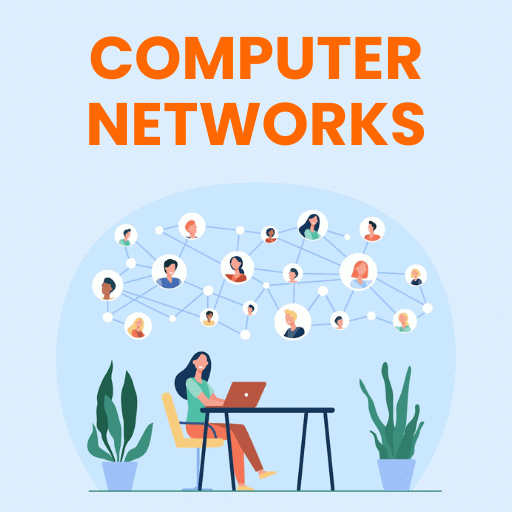Transmission Modes in Computer Networks | Computer Networks - Computer Science Engineering (CSE) PDF Download
| Table of contents |

|
| Introduction |

|
| Simplex Mode: Unidirectional Communication |

|
| Half-Duplex Mode: Unsimultaneous Bidirectional Communication |

|
| Full-Duplex Mode: Simultaneous Bidirectional Communication |

|
Introduction
Transmission modes in computer networks refer to the ways in which data can be transmitted between two devices. They define the direction of signal flow between the devices and can significantly affect the efficiency and performance of the communication process.

There are three primary transmission modes: simplex, half-duplex, and full-duplex.
Simplex Mode: Unidirectional Communication
In simplex mode, data can only travel in one direction, much like traffic on a one-way street. One device sends data, while the other only receives it.
Example: A keyboard and a traditional monitor. The keyboard (input device) sends data to the computer, while the monitor (output device) only displays information.
 Advantages:
Advantages:
- Simplicity and Reliability: Since data flows in one direction, the communication process is straightforward and reliable.
- Cost-Effective: Requires only one communication channel, making it cheaper to implement.
- No Coordination Needed: There’s no need for synchronization between the sending and receiving devices, simplifying the process.
- Ideal for Specific Applications: Perfect for scenarios where feedback isn’t necessary, such as broadcasting information or surveillance systems.
Disadvantages:
- One-Way Communication: Only supports unidirectional data flow, limiting its use cases.
- No Error Verification: Cannot confirm if the data has been received correctly, as there’s no return path for acknowledgment.
- Limited Applications: Not suitable for situations where two-way communication is essential, like interactive applications.
Half-Duplex Mode: Unsimultaneous Bidirectional Communication
Devices can both send and receive data, but not at the same time. When one device is transmitting, the other must wait until it’s finished to start sending.

Example: Walkie-talkies. Communication goes back and forth, but only one person can speak at a time while the other listens.
Advantages:
- Two-Way Communication: Allows data to flow in both directions, which is necessary for many applications.
- Efficient Use of Channel: The same channel is used for both sending and receiving data, maximizing the use of available bandwidth.
- Cost-Effective: Less expensive than full-duplex mode as it only requires one communication channel.
Disadvantages:
- Cannot Transmit Simultaneously: Only one device can send data at a time, leading to potential delays.
- Coordination Required: Devices need to coordinate when to send and receive data, which can complicate the communication process.
- Potential for Delays: The need to switch between sending and receiving can introduce delays, which might be problematic for time-sensitive applications.
 |
Download the notes
Transmission Modes in Computer Networks
|
Download as PDF |
Full-Duplex Mode: Simultaneous Bidirectional Communication
Both devices can send and receive data at the same time. This can be achieved either through two separate channels or by dividing the channel capacity for two-way communication.

Example: Telephone conversations, where both parties can speak and listen simultaneously.
Advantages:
- Ideal for Real-Time Applications: Perfect for applications requiring real-time interaction, such as video conferencing or online gaming.
- Most Efficient Mode: Maximizes the use of available bandwidth as both devices can communicate simultaneously.
- High Reliability and Accuracy: Reduces the need for error correction since data can be transmitted and acknowledged immediately.
Disadvantages:
- Higher Cost: Requires two communication channels or sophisticated technology to divide the channel capacity, making it more expensive.
- Increased Complexity: More complex to implement and manage compared to simplex and half-duplex modes.
- Bandwidth Requirements: Needs higher bandwidth, which might not be necessary or feasible for all applications.
|
21 videos|115 docs|66 tests
|
FAQs on Transmission Modes in Computer Networks - Computer Networks - Computer Science Engineering (CSE)
| 1. What is the difference between simplex, half-duplex, and full-duplex transmission modes in computer networks? |  |
| 2. How does simplex mode differ from half-duplex mode in terms of communication capabilities? |  |
| 3. Can a network switch support full-duplex mode for communication between devices? |  |
| 4. What are some common examples of devices that typically operate in simplex mode in computer networks? |  |
| 5. How does full-duplex mode enhance communication efficiency in computer networks compared to simplex mode? |  |































